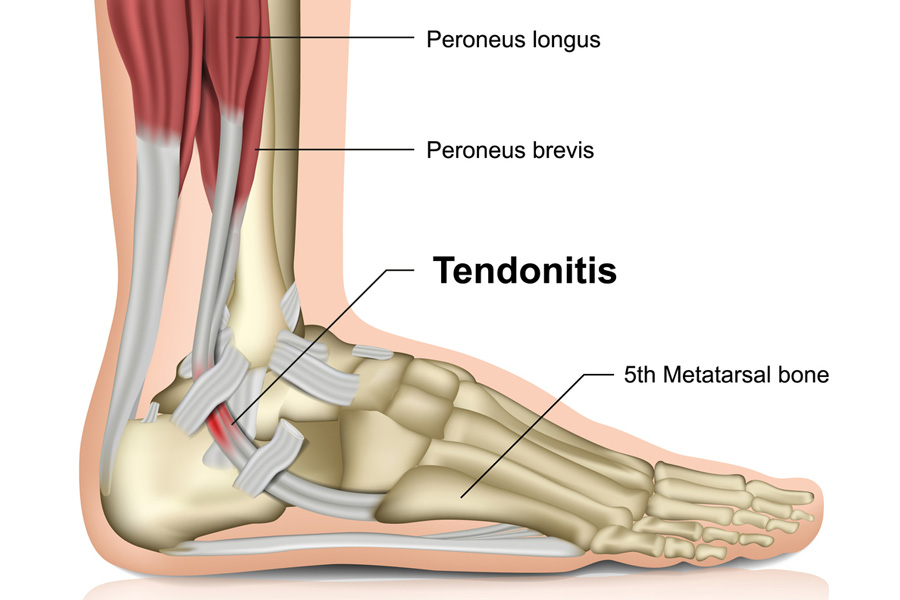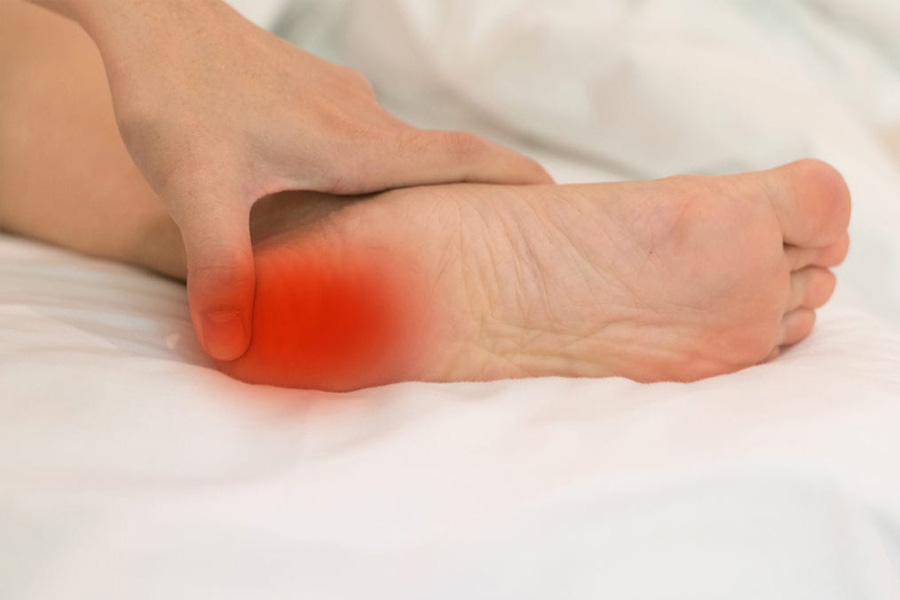Peroneal tendonitis is a common condition that can cause intense pain and discomfort in the foot. But don’t worry – there are effective treatments that can help you manage the condition! In this comprehensive guide, we will explain what you need to know about peroneal tendonitis, from causes and symptoms to diagnosis and treatment.
What Is Peroneal Tendonitis?
The peroneal tendons are two long, narrow tendons located along the outside of the lower leg. Peroneal tendonitis occurs when these tendons become inflamed and irritated. This can cause pain and swelling in the foot, ankle, or calf. It’s most common among runners, dancers, athletes, and those who wear high heels or other ill-fitting shoes.
What Causes the Condition?
Peroneal tendonitis can be caused by overuse of the tendons due to activities like running and jumping. It can also occur when the foot is exposed to repetitive strain or trauma, such as from a hard impact landing on an uneven surface. Poorly fitting shoes can also contribute to the condition.
What are the Symptoms of Peroneal Tendonitis?
The most common symptom of peroneal tendonitis is pain or tenderness along the outer edge of the foot and ankle. You may also experience swelling, stiffness, or a burning sensation in the foot.
How Do Doctors Diagnose Peroneal Tendonitis?
Your doctor will likely diagnose peroneal tendonitis based on your medical history and a physical exam. During your physical exam, your doctor will inspect your feet and press on the outer edge to check for tenderness. They will also look at the angle of your foot to check for any misalignment.
An accurate and timely diagnosis is important because delaying diagnosis and treatment can cause the condition to worsen.
How Is Peroneal Tendonitis Treated?
Treatment for peroneal tendonitis depends on the severity of your symptoms and the underlying cause. Your doctor may recommend a variety of treatments, including:
Rest
Rest is the most important part of treating peroneal tendonitis. This means avoiding activities that cause pain or discomfort, such as running and jumping, as well as wearing supportive footwear.
Ice
Applying an ice pack to the affected area can help reduce swelling and pain. Wrap the ice pack in a towel before applying it to your foot to avoid causing further injury. Do not put ice directly on your skin for extended periods.
Medication
Your doctor may prescribe anti-inflammatory medications to reduce swelling and pain. Over-the-counter remedies can also help manage symptoms. Only take medications as prescribed by your doctor.
Physical Therapy
Your doctor may recommend physical therapy to help strengthen the muscles in your lower leg and improve flexibility. This will help reduce the strain on your peroneal tendons.
Your therapy program may also include:
- Stretching exercises to improve flexibility
- Low-impact aerobic exercises, such as swimming or cycling
- Balance and coordination exercises
- Manual therapy techniques, such as massage or joint mobilization
- Taping or bracing to stabilize the foot
In addition, your therapist may use other therapeutic modalities, like:
- Ultrasound – the use of sound waves to reduce inflammation
- Laser therapy – the use of low-level lasers to reduce pain and promote healing
- Electric stimulation – the use of electrical current to reduce swelling and pain
Surgery
In rare cases, surgery may be an option if other treatments fail to provide relief. Surgery can help relieve pain and improve function, but it’s usually only recommended if the condition is severe or not responding to other treatments.
Surgery will involve repairing the damaged tendon or removing scar tissue that is causing irritation. Following a surgical procedure, your doctor will likely recommend physical therapy to help you regain range of motion and strength. The best treatment for peroneal tendonitis will depend on the severity of your symptoms and the underlying cause.
How Can You Prevent Peroneal Tendonitis?
You can try to prevent peroneal tendonitis by:
- Wearing proper footwear and avoiding shoes that are too tight or uncomfortable
- Taking regular breaks from activities that require repetitive motion, such as running or jumping
- Stretching and strengthening the muscles in your lower leg
- Foam rolling to help reduce tightness in the muscles around your lower leg
- Consulting your foot and ankle doctor to learn about injury prevention
When to Visit Your Foot and Ankle Doctor for Peroneal Tendonitis
It’s important to seek medical attention if you experience any of the symptoms associated with peroneal tendonitis. Only a qualified foot and ankle doctor can accurately diagnose and treat the condition.
Also, consider visiting a doctor if:
- Your symptoms are getting worse, instead of better
- You’re having difficulty walking or participating in activities you used to do
- You experience sudden swelling or discoloration in your foot
- You observe any signs of infection, such as redness or warmth in the affected area
- You want to learn more about prevention
Your foot and ankle doctor will provide you with a comprehensive plan to manage and treat your peroneal tendonitis. They may recommend lifestyle changes, medications, physical therapy, or in some cases, surgery.
Peroneal Tendonitis Treatment in Cincinnati, OH
Peroneal tendonitis is an inflammatory condition that can be painful and debilitating. If you experience any of the symptoms mentioned above, don’t wait to seek medical help. Your foot and ankle doctor can provide you with an accurate diagnosis and a comprehensive treatment plan. This plan can reduce pain, swelling, and discomfort, allowing you to get back to your normal activities.
Looking for effective peroneal tendonitis treatment in Ohio? You can rely on Cincinnati Foot & Ankle Care (CFAC). Our highly skilled foot and ankle doctors will make sure you get the care you deserve. Our entire healthcare team will be with you from diagnosis to recovery. You may call our friendly staff at the office nearest you for assistance. You can also book a visit to CFAC using our secure online appointment request form.





